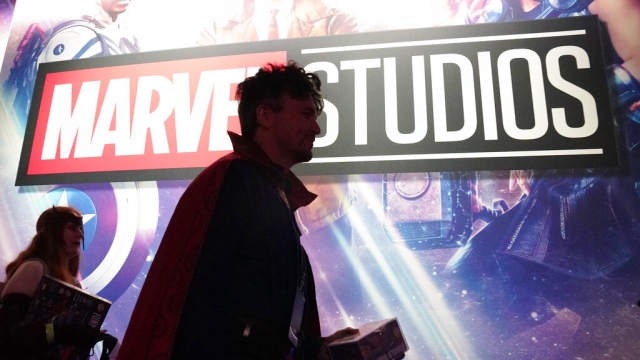From the world of Pandora in "Avatar: The Way of the Water" to the hyper-realistic jets in "Top Gun: Maverick" and the exoplanetary weather of "The Mandalorian," chances are your favorite films and TV series owe a lot to visual effects artists.
In 2022, the market size of the global VFX industry was estimated to reach more than $9 billion, according to several research groups, and that growing demand for visual effects is straining the artists working behind the scenes.
"We got a lot of interest from VFX workers who are seeing us fighting those problems for unionized film and TV workers and saying, ‘We want to be brought up with those sorts of standards, and we want to have a vehicle by which to fix these problems,’" said Jonas Loeb, communications director at IATSE.
Scripps News previously reported on the issues facing the VFX industry, including long hours, low pay, and outsourcing jobs to companies outside of the U.S.
Now, following the dual Hollywood strikes from the Writers’ Guild of America and the actors’ guild SAG-AFTRA, more than 50 visual effects workers with Marvel Studios have filed a unionization election with the National Labor Relations Board.
Matthew Loeb, the president of the International Alliance of Theatrical Stage Employees, or IATSE, addressed the potential unionization: "We are witnessing an unprecedented wave of solidarity that’s breaking down old barriers in the industry and proving we’re all in this fight together."
"We would love to have as many VFX workers in the same union that already represents film and TV folk, right? The more of us there are, kind of the more ability we have to negotiate better contracts which improve, you know, entertainment workers’ lives," said Jonas Loeb.
SEE MORE: Comic book company highlights Black, marginalized comics
This is actually the second major unionization effort started by visual effects workers.
In 2014, artists attempted to create a VFX trade association to prevent studios from outsourcing visual effects work, but within two years, the group ran out of money to pay for legal funds.
Other financial struggles, including thin profit margins and outsourcing, have long plagued VFX companies, even the most successful.
As Brian Westenhoffer accepted the 2013 Academy Award for visual effects in "Life of Pi," his acceptance speech was cut short after he spoke out about the financial struggles in VFX work.
"Sadly, Rhythm & Hues is suffering severe financial difficulties right now..." said Brian Westenhoffer, the Visual Effects Supervisor for "Life of Pi."
The company, Rhythm & Hues, shuttered the next year.
"All this VFX work takes people to do, even though it's considered to be computer-generated. A lot of 'computer-generated imagery,' it's called, still takes a person to put in the information that yields a good result, " said Jonas Loeb.
Ten years later, VFX art is arguably more in demand than ever before, but VFX artists are still fighting for better labor standards.
Going forward, if the Marvel VFX team successfully organizes, other artist groups will likely follow suit.
Trending stories at Scrippsnews.com
- Musk says potential cage bout with Zuckerberg will be held in Italy
- As hip-hop turns 50, Milwaukee museum highlights its bold history
- Rock 'n' roll legend Elvis Presley's historic revolver to be auctioned
----
STAY IN TOUCH WITH US ANYTIME, ANYWHERE



